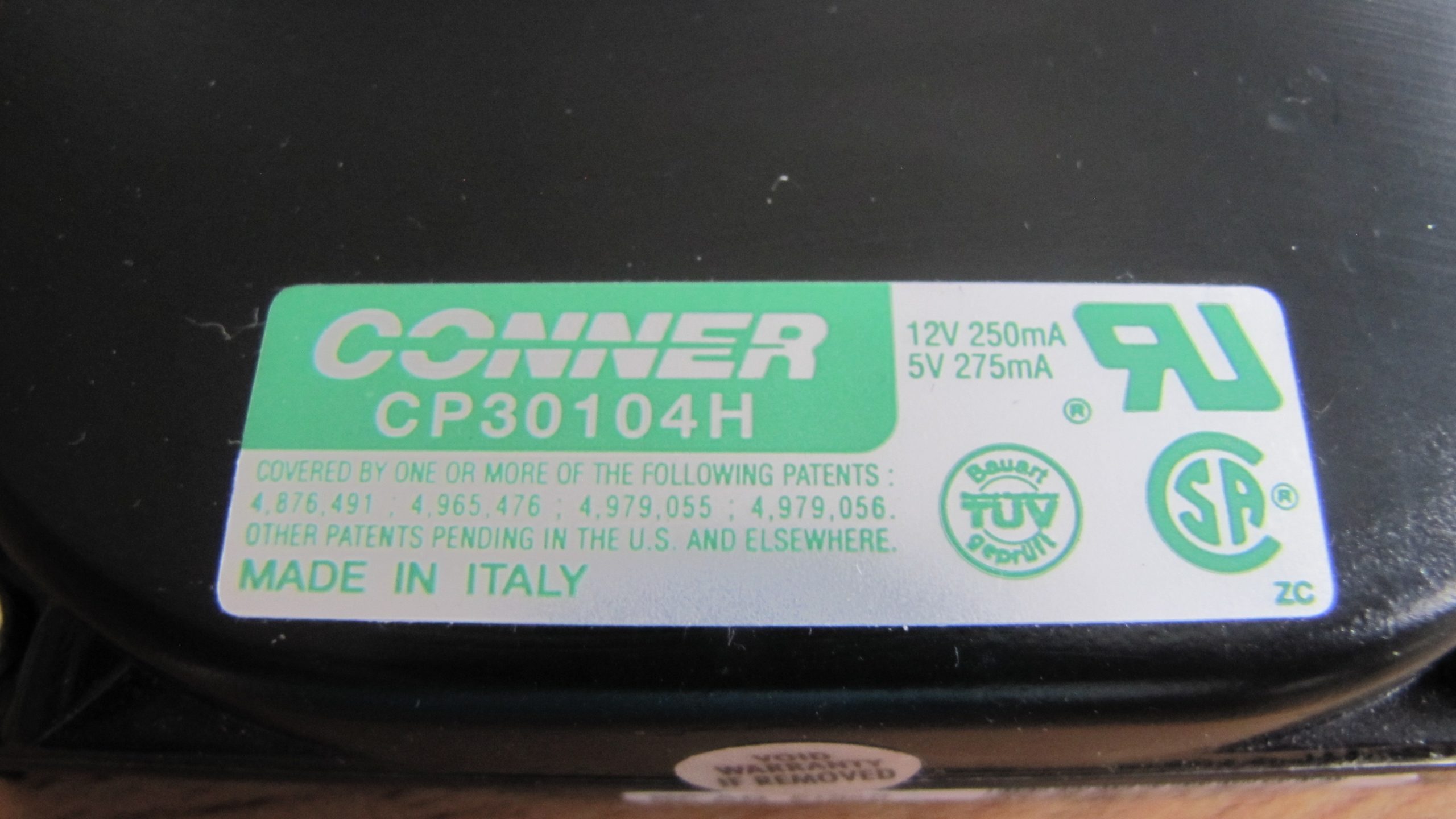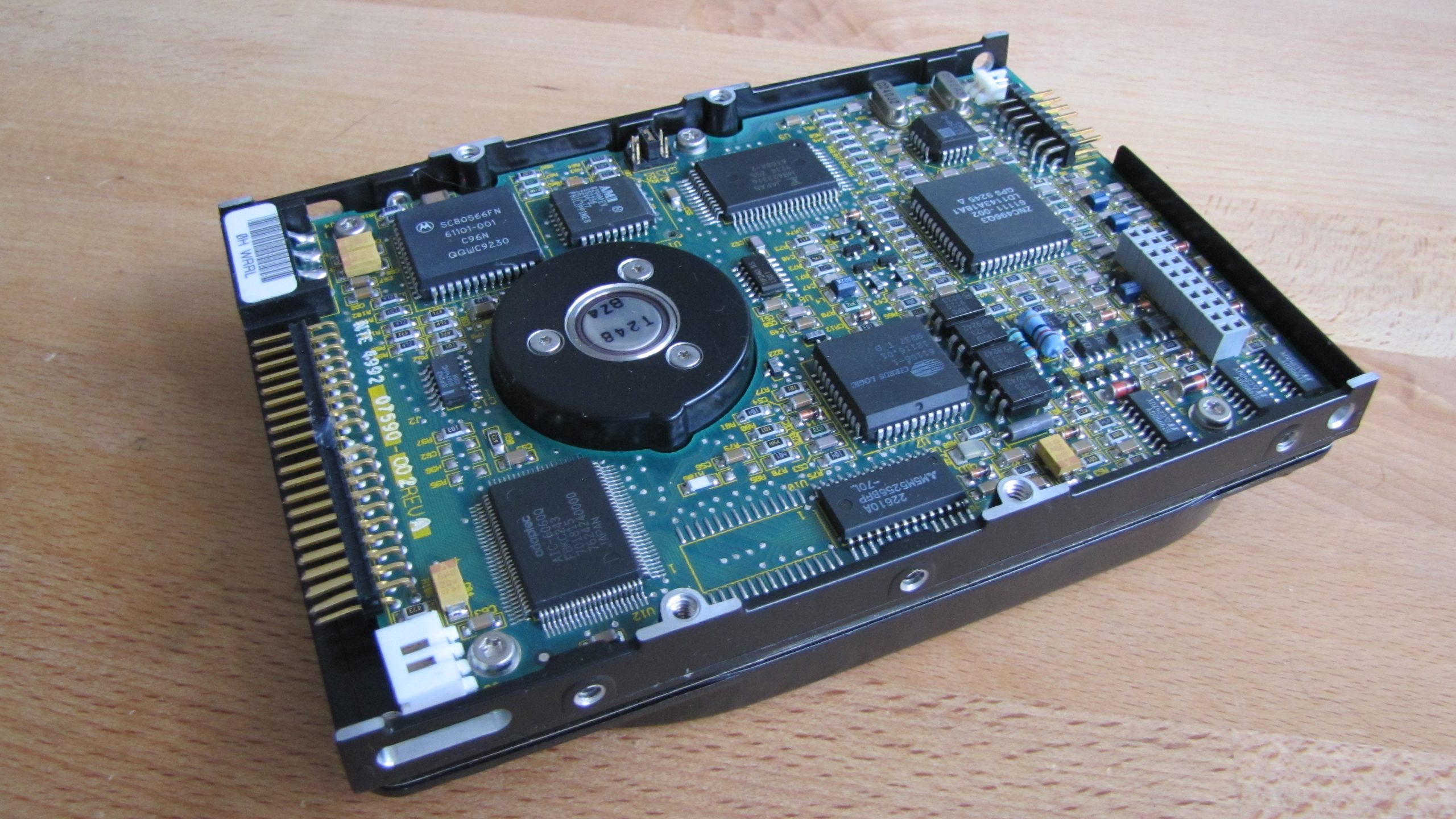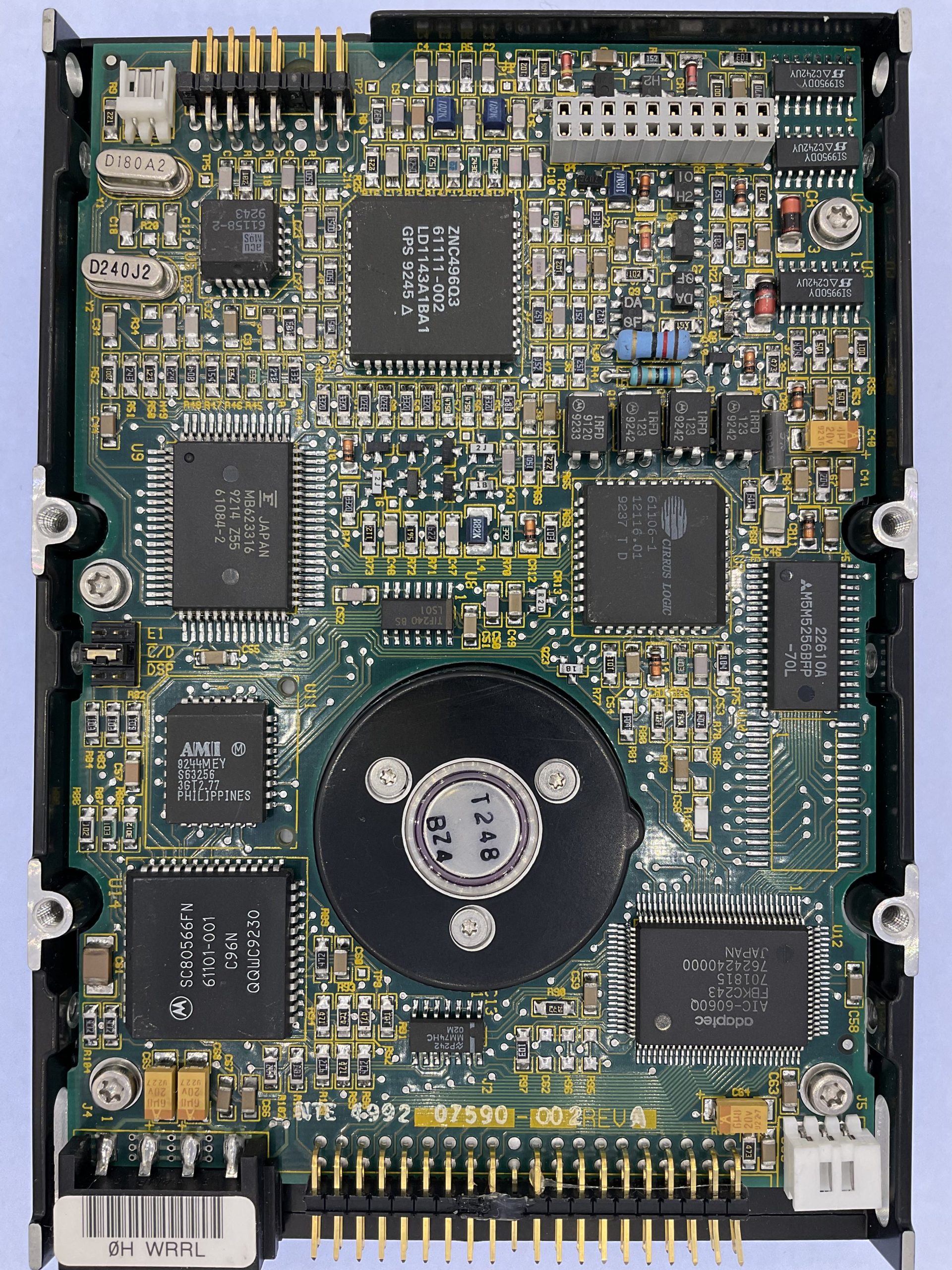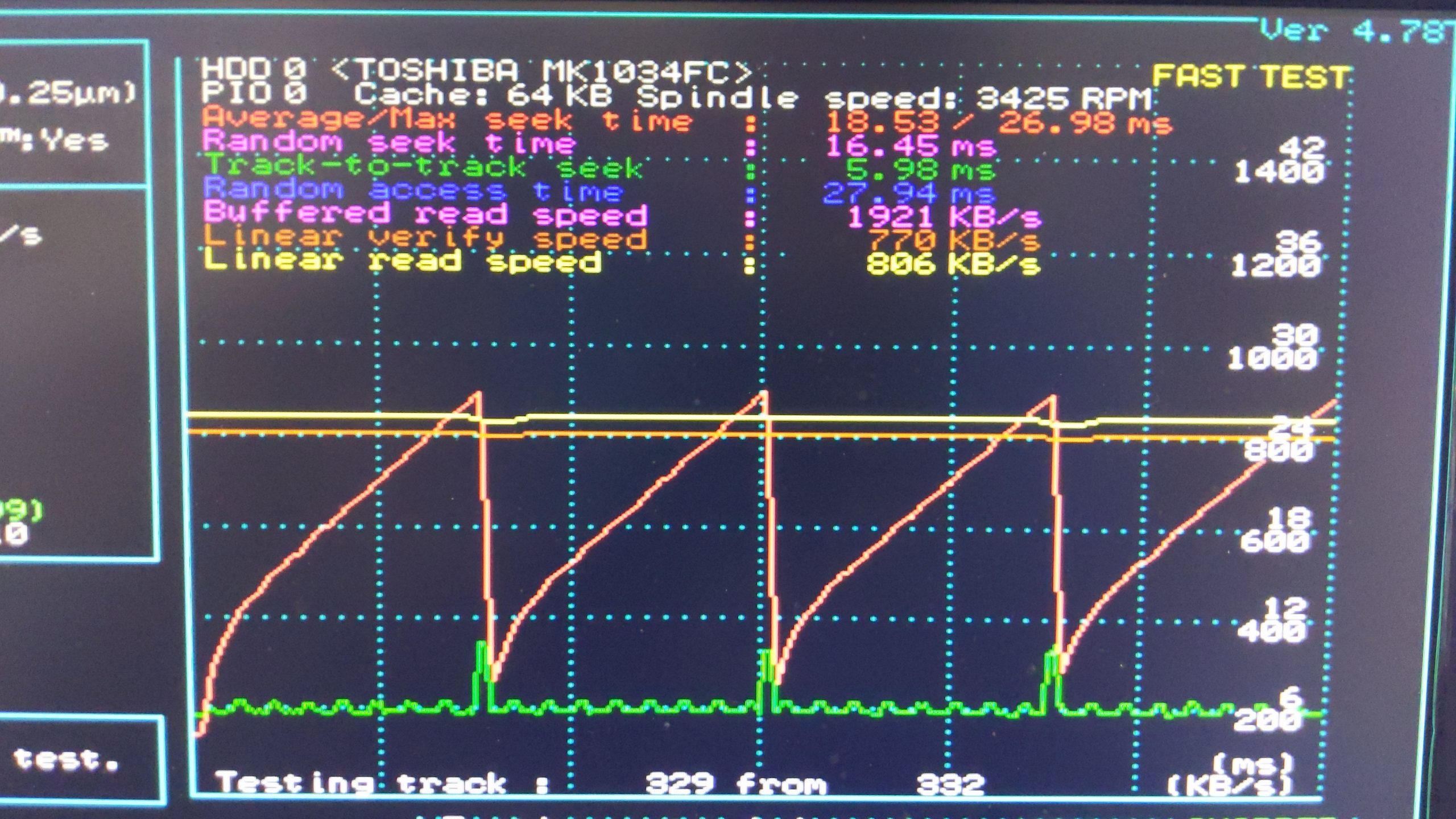In 1992, Conner Peripherals were a big name in the industry. Arguably, Conner drives are some of the most ubiquitous models to find from machines dating back to this era, with their dominating position in the market. Many brands tried and failed to compete with Conner, a company which no longer exists today.
This particular drive is a relatively early model when dealing with Conner’s classic “tub” design strategy during this period. As opposed to most drives from this era, this drive uses each platter surface sequentially, compared to the usual synchronous track layout. Another drive which shares this unique layout is the Toshiba MK-1034FC, which was an attempt to compete with Conner’s dominance at the time. Further below, we’ll compare the two in terms of how they fare up against each other.

Drive Attributes
-------------------------------------
Conner Peripherals CP30104H
-------------------------------------
Capacity 121MB
Mfc Date 1992
Format 3.5"
Interface PATA
Platters 2
Heads 4
RPM 3400
CHS 1524/4/39 (native)
762/8/39 (translated)
-------------------------------------
Reigning in with 4 platters and 2 heads, this drive has a near identical layout to the aforementioned MK-1034FC, yet with slightly higher platter density. The flat-base design Conner used for these drives was used until early 1996 for a vast array of models. Of course, the main idea here was a cost saving one, but the design itself does seem to hold up well in this day and age regardless.
The design topology here is very different to that of modern drives, alongside more expensive drives from the period this drive was manufactured. The top plate surrounds the drive mechanics, as opposed to the now-norm where the base is molded around them instead.
This particular example is practically new. I picked it up as new old stock around 8 years ago and have barely used it since. Thus, the bearings are in great condition!

Conner were pretty famous for never including jumper diagrams until much later models, such as the CFS210A. As a result, finding the proper jumper settings aren’t the easiest with these. Fortunately, these days, the internet provides the answers.
=================================================
C/D - Jumpered addresses drive as drive C.
Not jumpered addresses drive as drive D.
DSP - Drive slave present.
Not jumpered selects single drive only.
=================================================

Back when this drive was relevant, Olivetti had a huge stake in Conner, at 49% (Conner Peripherals being the other shareholder, at 51%). As a result, Conner and Olivetti entered a joint venture when building a new drive production factory in Italy. These drives are the result of this partnership. It’s not everyday you see drives made in Europe, but it’s a fascinating part of what makes these drives more interesting than most other relatively “boring” Conner drives. (in reality, Conner drives are some of my favourites with this design, but that’s beside the point)

It was common procedure to not have any plastic housing around the PATA connector, as can be seen on most other IDE drives from circa 1992. Aside from that, the usual Molex and mini-power connectors are present.
+-------+
| 1 2 3 |
+-+-+-+-+
| | +------------- Ground
| +--------------- +12V
+----------------- + 5V
Not to mention, the rather bizarrely placed warrenty stickers Conner slapped on these for many years to come. Conner never decided to put stickers over screws on the top plate (likely as a cost-saving measure), which was always something I loved about these when opening them. Fortunately, that hasn’t happened much since I’ve had great reliability records with these.

Conner had a relatively consistent PCB design for many years, only having minor IC consolidation as technology advanced.

Conner were never involed with IC production, simply some design notation when concerning drive firmware. The Motorola SC80566FN, hails no results online. All we know is that it’s a specialised IC (due to the scarcity of information it holds), alongside the PLCC (chip carrier) package it comes in. Supposedly, some sources dictate it’s an alternative package for the classic Motorola 68HC11 8-bit microcontroller family, which may hold some truth to it.
The AMI Semiconductor 8244MEY is another curious case of being extinct on the web. The Adaptec ATC-6060Q IC is related to the PATA bus translator, as clearly seen from the connecting traces between it (U12) and the IDE connector. This IC is the starting point of data coming in and the exit point of data coming out.
Buffer RAM is produced by Mitsubishi. There’s a custom chip with no immediate vendor provided, supposedly it’s just a generic programmable logic controller. The rest of the logic isn’t all that interesting.
The jumper header block can be seen on the centre left. At least Conner decided to label it via the PCB silkscreen. It’s better than nothing I suppose. Conner also nicely provided an easy to use LED header at the bottom of the drive. The pin block to the right of the LED header is for serial in/out connections. Pretty fun!


As mentioned at the start of this post, this drive uses sequential surface recording, which isn’t the most common sight. The only other drive I have which shares this trait is the MK-1034FC, as I mentioned previously. Let’s compare their Speedsys results to see how they both look.

Both of these drives have shockingly similar performance, even when ignoring the slightly different graph outputs. Seemingly, Toshiba did a decent job with their one off 3.5″ drive to compete with Conner! The Toshiba does have slightly more buffer RAM though, which perhaps gives it an advantage. Although, the Conner one-ups it in the density department.
Either way, it’s interesting to compare two rather obscure drives, which makes them to be my favourite pair of drives from this era. Of course, this CP30104H is in perfect condition, as you’d expect with a practically new drive.
Conner kept up their streak of low cost, high output drives for a few years to come. This would only be halted by Seagate, who acquired Conner in 1996 (technically, it began in late-1995, but finalised in early-1996), a mere 4 years after this drive was produced.
If you listen closely to the video I made with this drive, much like the MK-1034FC, you can hear the drive use each platter surface individually, particularly during the hdmotion demonstation.
If you missed the video I made on this drive, you can find it here: